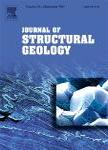版权所有:内蒙古大学图书馆 技术提供:维普资讯• 智图
内蒙古自治区呼和浩特市赛罕区大学西街235号 邮编: 010021

作者机构:Sonoma State Univ Dept Geol Rohnert Pk CA 94928 USA Sonoma State Univ Dept Math & Stat Rohnert Pk CA 94928 USA
出 版 物:《JOURNAL OF STRUCTURAL GEOLOGY》 (结构地质学杂志)
年 卷 期:2011年第33卷第10期
页 面:1467-1476页
核心收录:
学科分类:0709[理学-地质学] 081803[工学-地质工程] 07[理学] 08[工学] 0708[理学-地球物理学] 0818[工学-地质资源与地质工程]
主 题:Strain analysis Best-fit ellipsoid Mathematica Statistics Error margins Computer program
摘 要:A suite of geological computer programs written in Mathematica is currently available both within the online repository for the Journal of Structural Geology as well as on the first author s website (http://***/users/m/mookerje/***). The majority of these programs focus on three-dimensional strain analysis (e.g., determining best-fit strain ellipsoids, plotting elliptical data on either a Flinn or Hsu diagram, and determining error bounds for three-dimensional strain data). This program suite also includes a ternary diagram plotting program, a rose diagram program, an equal area and equal angle projections program, and an instructional program for creating two-dimensional strain path animations. The bulk of this paper focuses on a new method for determining a best-fit ellipsoid from arbitrarily oriented sectional ellipses and methods for determining appropriate error bounds for strain parameters and orientation data. This best-fit ellipsoid method utilizes a least-squares approach and minimizes the error associated with the two-dimensional data-ellipse matrix elements with the corresponding matrix elements from sectional ellipses through a general ellipsoid. Furthermore, a kernel density estimator is utilized to yield reliable error margins for the strain parameters, octahedral shear strain. Flinn s k-value, and Lode s ratio. By assuming a gamma distribution for the simulated principal axes orientations, more realistic error bounds can be estimated for these axes orientations. (C) 2011 Elsevier Ltd. All rights reserved.